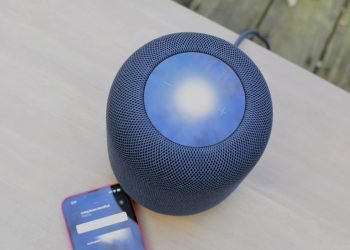//php echo do_shortcode(‘[responsivevoice_button voice=”US English Male” buttontext=”Listen to Post”]’) ?>
Depending on your position in the value chain, deployment of internet of things (IoT) connected devices can be complex. While the principle might be simple—deploy sensors, collect data and do something with that data—the actual implementation can take plenty of directions. The complexity comes from having to plan for so many aspects of your system. That includes things like choice of network technology, its ease of integration into existing systems, scalability, managing the data and of course, ensuring security.
For wide-area deployments, one of the network technologies commonly used is LoRaWAN. A report released this month, “Briefing for IoT Solution Specialists: Using LoRaWAN in Smart Buildings, Cities & Utilities,” suggests that LoRaWAN is the leading low-power wide-area network (LPWAN) technology for IoT applications. Produced by Beecham Research for the LoRa Alliance, it indicates that shipments of LoRa chipsets are much higher than that for other LPWAN technologies (see chart).

The Things Conference, taking place in Amsterdam Sept. 21-22, brings together a large cross-section of this community, including chip vendors, system integrators, service providers and end users to showcase successful, real-world applications (such as its Wall of Fame, which allows attendees to touch, feel and interact with hundreds of LoRaWAN-enabled gateways) to explore challenges and run workshops. The conference and exhibition expects to bring together more than 1,500 people representing more than 70 industry players.
Among the keynote presentations is Alistair Fulton of IoT Labs, who will be asking, “If the value of IoT solutions is so clear, why aren’t they in use by every company in the world?” He’ll explain the answer lying in the fact that implementing IoT solutions is often complex, expensive and disruptive. Olivier Seller of Semtech will speak on the future of LoRa technology, explaining how the combination of LoRaWAN tech with 5G networks could create powerful synergies to enable new use cases for businesses and individuals.
Clearly, intelligent IoT is also going to be a key area of discussion at the two-day conference.
For example, Jenny Plunkett of Edge Impulse will talk about how to rapidly develop AI models for production-grade IoT edge devices. And Michael Lazarenko of embed.it will explain how to leverage ML in embedded software development for the IoT.
Meanwhile, Wolfgang Weber from Pepperl+Fuchs will explain the use of AI in flood management, using data from LoRaWAN sensors transmitted over long distances. The goal there is to quickly detect rising water levels in rivers or canals—so that people can react accordingly.
The conference isn’t just all theory, with users talking about their experiences with IoT implementation. One of those talks will be from Scott Andrews, an innovation and integration analyst with Conwy County Borough Council in Wales. He will describe his journey bringing the IoT to the municipality for which he works and plans to drive change and savings to support cost-effective public-sector services.
Energy-harvesting will also be important in enabling large-scale IoT adoption. Several energy-harvesting technologies are emerging with the potential to replace batteries in IoT devices and make them autonomous. Roelof Koopmans will talk about how Dracula Technologies is harvesting energy from low-intensity, indoor lighting using ink-jet printed photovoltaic cells integrated onto sensors, smart meters, remote controls and other electrical devices.
There are many other talks on asset-tracking, in healthcare, sports, smart cities, factories and other topics. To explore the two-day schedule, click here. As a media partner, EE Times will be attending and covering the conference.



























